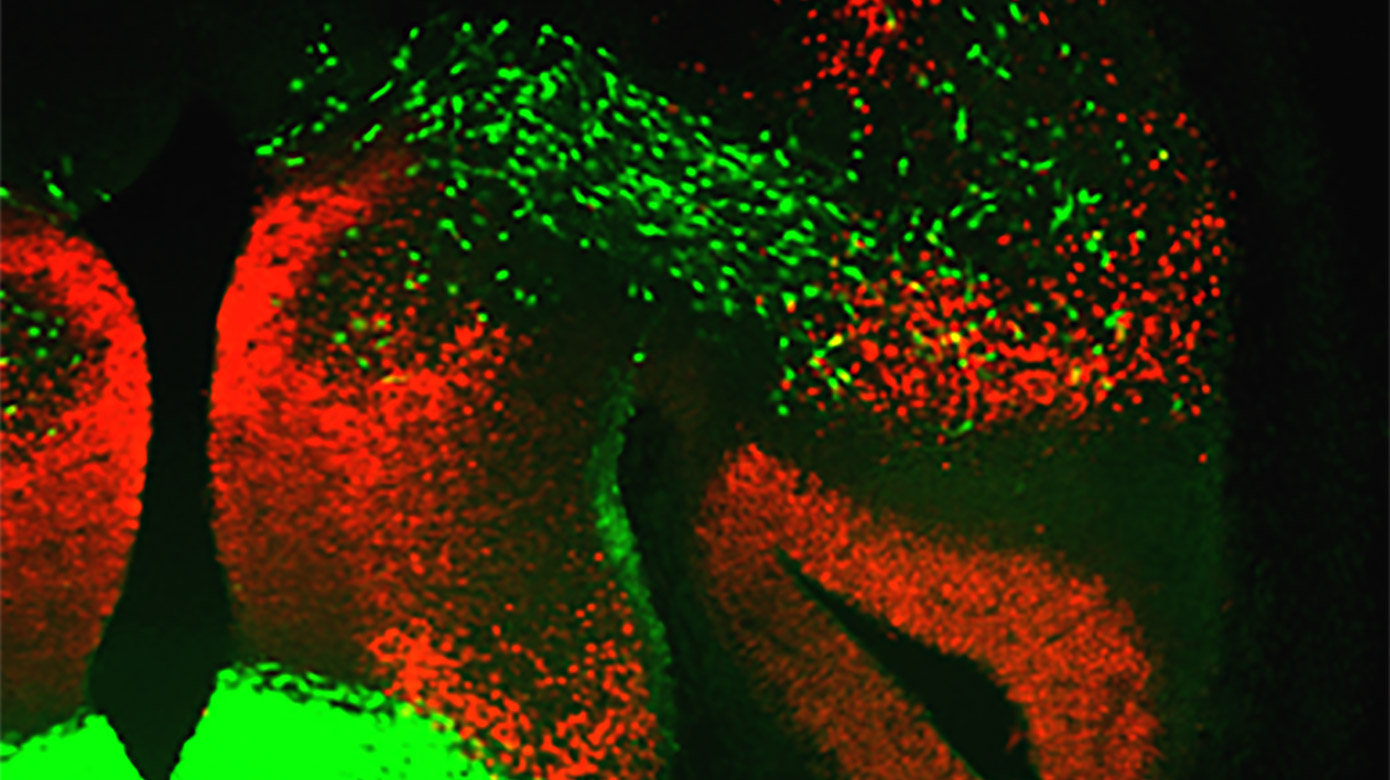Corbin Laboratory

About the Lab
Using the mouse as a model, we employ a combination of techniques including embryology, genomic profiling, state-of-the-art circuit tracing and manipulation and behavior. The goal of our studies is not only to gain greater insight into the neurotypical developing brain but also to address core behavioral deficits in prevalent human neurodevelopmental disorders. We are also always looking for highly motivated, inquisitive individuals to join our diverse team of researchers, including hosting thesis students from the University of Maryland, College Park, Georgetown University and George Washington University.
-
Lab Focus Areas
Uncovering the developmental genetic programs for establishment of amygdala neuronal diversity and connectivity Determination of how developmentally defined limbic subcircuits control sex-specific innate social behaviors. Translation of knowledge of limbic system development toward understanding genotype to phenotype links in autism spectrum disorders.
-
Contact
Joshua Corbin, Ph.D. Principal Investigator [email protected] 202-476-6281
- Lab Twitter External Lab Site
Developmental Regulation of Innate Behavior
Sokolowski et al. discovered that the embryonically expressed transcription factor Dbx1 plays a selective and critical role in the specification of the hypothalamic stress circuit and HPA axis function. These findings link embryonic patterning to manifestation of stress-induced behaviors.
Featured Publications
-
Sex differences in biophysical signatures across molecularly defined medial amygdala neuronal subpopulations
Matos, Y., Heidi, Hernandez-Pineda, D., Charpentier, C. M., Rusk, A., Jones. S. Kevin, Corbin, J.G. eNeuro (2020) -
Identification of amygdala-expressed genes associated with autism spectrum disorder
Herrero, J,. Maria, Velmeshev, D., Hernandez- Pineda, D., Sethi, S., Sorrells, S., Banerjee, P., Sullivan, C., Gupta, R., A., Kriegstein, R., A., Corbin, J. G. Molecular Autism (2020) -
Amygdala corticofugal input shapes mitral cell responses in the accessory olfactory bulb
Oboti, L., Russo, E., Tran, T., Durstewitz, D., & Corbin, J. G. eNeuro 0175-18 (2018) -
Embryonic transcription factor expression in mice predicts medial amygdala neuronal identity and sex-specific responses to innate behavioral cues
Lischinsky J.E., Sokolowski K. Li, P. , Esumi S., Kamal Y., Goodrich M., Oboti L., Hammond T.R., Krishnamoorthy, M., Feldman D., Huntsman M.M., Liu J. & Corbin J.G. eLife 6:e21012 (2017) -
Specification of select hypothalamic circuits and innate behaviors by the embryonic patterning gene dbx1
Sokolowski, K., Esumi, E., Hirata, T., Kamal, Y., Tran, T., Lam, A., Oboti, L., Brighthaupt, S.C., Zaghlula, M., Martinez, J., Ghimbovschi, S., Knoblach, S., Pierani, A., Tamamaki, N., Shah, N. M., Jones, K.S., Corbin, J.G. Neuron 86: 403-416. (2015)
